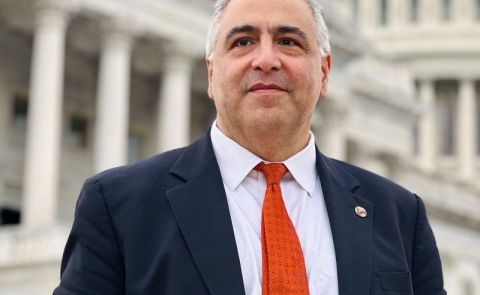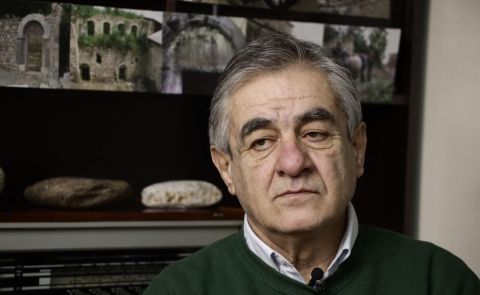
Jagannath Panda: “India’s INSTC Commitment Is Not Reliant on Western Endorsement”

The International North-South Transport Corridor (INSTC) is a 7,200km mostly overland network stretching from India to Russia, via Azerbaijan and Iran, branching out to Europe and Central Asia. It is an old idea with new momentum. Russia’s ties with the West have been disrupted both in terms of energy and financial ties. Moscow looks to the Indian Subcontinent and China for its next big markets and trade partners, which is a major boost to South-to-South relations and the middling powers often clustered in the BRICS acronym.
Russia's economic and security focus on Ukraine has made Moscow reliant on cooperation. Soft power is more important than hard power, for the first time in Moscow’s post-Cold War history. Russia is reliant on Iran, India, Turkey, and other Middle Powers to make ends meet, as Moscow can no longer rely on its traditional trade partners for energy, technology, pharmaceuticals, communications, and transport. From this perspective, the INSTC – first conceived in 2000 – consolidates a new set of relationships that is remoulding South-to-South geopolitics. This project could lay the groundwork for a new relationship between Russia, Armenia, Turkey, Azerbaijan, and the Central Asian Republics.
The question is whether interdependence can indeed prevail over geopolitical competition. “Land divides, sea unites,” as the old Norwegian proverb says. To understand the significance of this plurilateral project, we reach out to Professor Jagannath Panda, the Head of the Stockholm Center for South Asian and Indo-Pacific Affairs at the Institute for Security and Development Policy, Sweden. Professor Panda also teaches at the Department of Regional and Global Studies at the University of Warsaw and is a Senior Fellow at The Hague Centre for Strategic Studies in the Netherlands.
Professor Panda is very much an expert on the future, a world in which the Indo-Pacific economy weighs more significantly than the Atlantic and where the world order is less rules-based and more contractual, engaged in plurilateral relations without multilateral strings attached. Can anyone build something so big in a world with so little certainty? Perhaps a few million dollars at the time.
Armenia, India, and Iran have been forming a strategic partnership. Is this just about military procurement, or is there also a connectivity agenda?
On the sidelines of the Raisina Dialogue, the Indian and Armenian Foreign Ministers discussed fostering deeper connections by reinforcing their bilateral dialogue, nurturing business partnerships, elevating educational and tech exchanges, and addressing security challenges. Following this, representatives of both countries met with their counterparts from Iran, sparking interest in growing strategic convergence between the three states. Military procurement is likely to be an important part of such a strategic partnership, as evidenced by the numerous arms deals between India and Armenia, including through Iran.
For India, expanding its defense industrial ecosystem by increasing defense exports (to meet Prime Minister Modi’s stated goal of reaching $5 billion in defense exports by 2025) is a priority. As a market, Armenia is crucial in this regard. However, in order to facilitate a robust defense trade and nurture trade partnership, there is an equal focus on the connectivity agenda. The proposed east-west transit route, as a supplement to the INSTC, suggests this. This Persian Gulf-Black Sea corridor would be parallel to the INSTC. Iran is also in talks to provide Armenia with vital access to Chabahar and Bandar ports. Such a connectivity agenda will certainly help push military aims but will have wider implications for facilitating trade and exchanges between them.
Two years ago, you described the INSTC as a trade highway with the potential to carry 70 percent of all container traffic between Eurasia, the Gulf region, and South Asia. Is the conflict in Ukraine and the Middle East a positive or negative catalyst for the project's realization?
Arguably, the Ukraine war and the onset of conflict in the Middle East only highlight the importance of the INSTC as a critical vehicle for achieving trans-regional integration. Both Russia and Ukraine are members of the initiative, which raised questions as to its viability in the near term. However, the war has in fact acted as a catalyst: although the INSTC was proposed in 2000, progress on its realization was exceedingly slow until the onset of the Ukraine war and Western sanctions on Russia. After the war, Putin’s first trips abroad were to Turkmenistan, Tajikistan, and Iran, all members of the INSTC. The sanctions only pushed member countries to realize the importance of unlocking the potential of the Caspian region, and the INSTC was a crucial project in this regard.
In October 2022, at the Second Caspian Economic Forum, INSTC featured prominently. Reportedly, seven new Russian freight trains heading for India crossed through Iran using the INSTC route within two weeks, pointing to great political interest in revitalizing the project. In other words, before the war, the question was whether INSTC was worth the massive investment required if trade between the countries was already at its limit. The Ukraine war bolstered the argument in favor of the corridor by highlighting its political and economic advantages. There is now a regional desire to realize the project.
The trade turnover between India and Russia has quadrupled since the war in Ukraine. Oil, which is usually seaborne cargo, is a major trade. As an expert in logistics, do you see any scope for an overland corridor to become a serious alternative to oil tankers? Who will trade what via the INSTC?
The current geopolitical climate suggests that the INSTC holds immense importance for Russia, which is looking to circumvent trade and logistical restrictions from the West. As a shorter, cheaper, and quicker transport corridor, INSTC could certainly be a viable alternative for Russia-India trade, including in sectors like oil, metallurgical products and other raw materials, electrical machinery and mechanical appliances, pharmaceuticals, and so on.
The oil trade between India and Russia has usually been seaborne because of a lack of developed land routes. Should the INSTC become a viable option, energy trade could be facilitated through the land-based route. Beyond Russia too, the INSTC is an important project for Central Asian and Caspian member countries, which are interested in exporting minerals, textiles, and agricultural products and importing manufactured goods and machinery. Essentially, all participants stand to gain from the operationalization of the INSTC, though the extent of the benefits will vary across the board.
The INSTC circumvents the Suez Canal. The 2021 stranding of the Ever Given Container Ship in the Suez Canal and the recent Houthi attacks in the Red Sea could be seen as additional arguments for its necessity. However, given the sanctions against Iran, who will invest in the highways and railways required to realize this master plan?
The INSTC route currently comprises a rough patchwork of numerous independent railway, roadway, and maritime projects. Integrating these independent routes into a well-developed, functioning transport corridor requires massive investments, which are at best tricky amid sanctions on Russia and Iran. While a cash-strapped Iran is unable to invest in the corridor, it has reportedly reached an agreement with Russia whereby it will support Russia’s aggression in Ukraine in return for securing Russian financing for the INSTC. In May 2023, it was announced that Russia would extend a loan of 1.3 billion euros to Iran for constructing the Rasht-Astara line of the corridor. In total, Russia is expected to spend a total of $3.5 billion on the INSTC by 2030, and this is likely to be an underestimate at best.
India has stated its intention to join the Eurasian Customs Union, along with Iran and the United Arab Emirates. Is this “software” significant for the realization of the INSTC? If so, is it a significant issue that Azerbaijan is not a member of the Eurasian Customs Union?
This is a significant issue, but a lot will depend upon negotiations on trans-border customs duties, including how to navigate commercial routes providing security. Eurasia is a dynamic yet complicated region. India’s ambition to be a part and parcel of the Eurasian geopolitics has been a constant factor over the last decade. Despite problems with China, India decided to be part of the Shanghai Cooperation Organization (SCO) a few years back. India takes the politics in Eurasia seriously and pursues a ‘connect-Central Asia’ strategy in its foreign policy. So, Delhi’s intent to join the Eurasian Customs Union is based on both commercial and geopolitical interests. India becoming a part of the Eurasian Customs Union will significantly strengthen Eurasian connectivity and corridor opportunities, including the INSTC.
In Baluchistan, the Indian government owns Chabahar, a port in South Iran. The Trump Administration exempted the port from sanctions in 2018, hoping it would be key to regional trade integration. With the US out of Afghanistan, tighter sanctions on Iran, and violence in Baluchistan, do you see the Indian government retaining commitment to this project?
Regardless of the changes in the geopolitical landscape, India seems to be invested in the Chabahar port project. In February 2023, it was announced that India allocated about Rs 100 crore (over $12 million) for the development of the port in its 2023-24 budget. Early this year, India’s involvement with the port was further consolidated with a new long-term agreement between the two countries that commits India to the project for ten years, to be automatically extended thereafter.
Despite the heightening tensions, India views the port project as crucial to its connectivity with the region and boosting regional trade at large. In fact, Chabahar port has only assumed greater significance in recent times. As India looks to stay engaged with a Taliban-led Afghanistan, the port enjoys special importance. Much of Delhi's humanitarian aid to the country is delivered through here. Notably, the Chabahar port’s importance in the India-Afghanistan axis is demonstrated by the fact that the Taliban recently announced an investment of $35 million in the port to reduce its dependence on Pakistan for access to international markets.
Can you imagine the West endorsing an overland route via Iran? Can you imagine it happening without Western influence?
There are already some worries in the West over India’s import of Russian oil. If New Delhi doubles down on the INSTC, it may experience greater pressure from its Western partners. However, India’s multi-alignment foreign policy approach and commitment to preserving its strategic autonomy mean that any pressure from the West will have its limits.
As India looks to establish itself as a major player in the region and beyond, it has proven that it is willing to stand firm on its stance regardless of global pressure. Accordingly, Western endorsement will not be a factor in India’s decision on how much capital it spends on the INSTC. That said, pushing ahead with the INSTC could have some associated costs. India will need to navigate through European sanctions and SWIFT sanctions on Iran, as well as Israel's relationship with Azerbaijan (which could challenge India’s Armenia policy).
Interview conducted by Ilya Roubanis
See Also


Irina Mamulashvili: Electoral Interference is a Playbook, not a Recipe
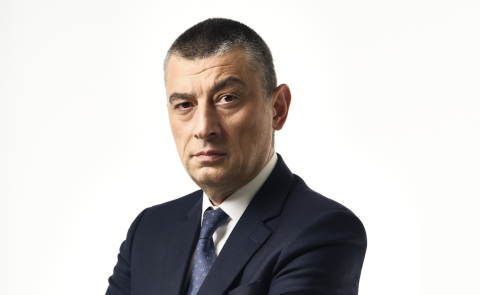
Giorgi Gakharia: The EU Should Engage Georgia Despite Its Democratic Backsliding
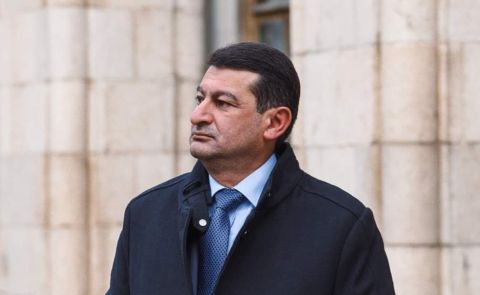
Peace or Capitulation? Shahverdyan on Armenia-Azerbaijan Agreement and the Nagorno-Karabakh Crisis
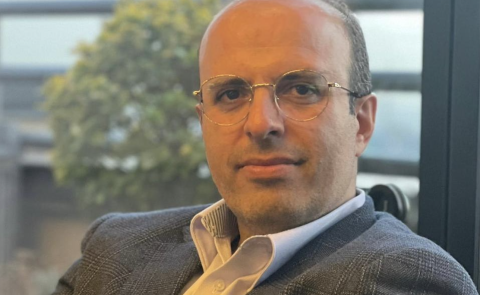
Ali Mousavi Khalkhali: Iran Will Avoid Conflict in the Caucasus
